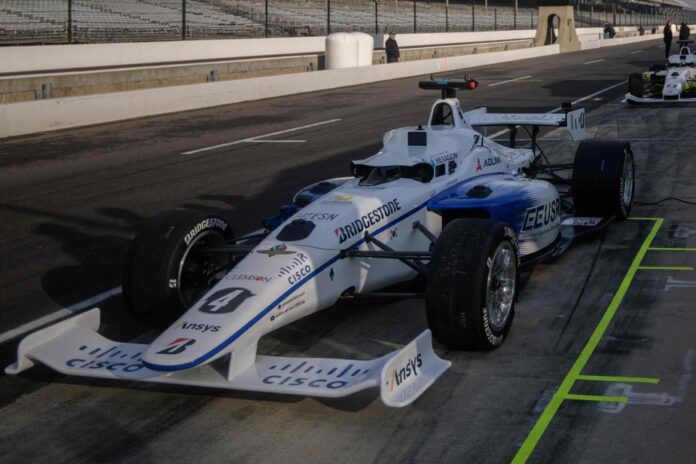The future of automotive technology has no limits, as this column demonstrates. Year after year, the automotive industry redefines our driving experience by offering a host of innovative, sometimes even revolutionary, technologies in electric vehicles, autonomous driving, intelligent safety devices and immersive entertainment systems.
The development of these new technologies is exciting. For this last column of the year, I present to you the 10 technologies that will need to be followed in 2024.
Car manufacturers love 3D printing to create complex parts while reducing production costs and offering exciting custom options. To date, Bentley, Aston Martin and Cadillac have already incorporated 3D printed components into their recent models, but Singer is taking this technology even further. With its 12 hypercars, it pushes the limits in terms of performance, handling, top speed, durability and efficiency.
Carbon fiber, composite aluminum alloys, high-strength steels: new lightweight and robust materials are revolutionizing the future of automotive development. With exceptional strength, these materials improve the performance and agility of vehicles, reduce their weight and help increase the range and energy efficiency of electric vehicles. Sports cars equipped with these materials can reach higher speeds and offer superior overall dynamics, in addition to maximizing vehicle safety.
Computerized engine management systems (electronic control units, computers, advanced adjustment software, etc.) are also experiencing their small revolution. The new performance settings take into account a multitude of factors, including engine performance, suspension settings, aerodynamics and driving conditions, allowing drivers to experience the maximum potential of their vehicle. The result is a personalized and optimal driving experience. Looking to the future, some racing series like Formula E and Extreme E are also taking advantage, even as they lead the way in developing this technology to improve the performance of electric vehicles.
The integration of connected automobile technology is also poised to revolutionize the automotive industry. By connecting to the internet, cars become part of a vast network and open up a world of possibilities. Connected cars can collect and transmit data in real time and thus optimize the performance, maintenance and overall efficiency of the vehicle. By accessing road data and sharing information, drivers can fine-tune their vehicle’s configuration and provide an optimal experience every time they ride.
ADAS (Advanced Driver Assistance Systems) offer significant benefits in terms of efficiency and safety. Constantly evolving, these technologies make it possible to maximize machine learning, take advantage of artificial intelligence and, consequently, improve their precision and reliability. In the world of sports cars, future models are expected to incorporate these systems, which will give learner drivers everything they need to push harder, while minimizing the risk of costly mistakes. In general, drivers will be able to focus more on the pleasure of driving, knowing that they can count on technology that ensures another level of safety. Enough to achieve a harmonious balance between human control and intelligent assistance.
Fans of racing simulation games are familiar with the technology that helps them stay on the right racing path and increase their speed with each lap. Imagine the excitement if this technology was transferred to real road experiences, with a ghost racer projected directly onto the car windshield. WeirI, an augmented reality company, is working on it. It wants to transform the traditional heads-up display into a more immersive and practical experience on the road. Its technology will overlay navigation directions as graphics on the actual road, ensuring better visibility so you don’t miss important information, such as speed limit warnings. The system even promises to surpass the capabilities of traditional racing simulators.
Although self-driving technology is advancing rapidly, true driving enthusiasts often resist the idea of handing over control of their vehicle to a computer. The Indy Autonomous Challenge, however, united both camps by showcasing autonomous racing cars using an IndyCar chassis and cutting-edge technology. This unique racing series achieves a dual goal, improving the capabilities of autonomous driving systems while increasing safety in high-stress situations. By collecting and analyzing data from these racing cars, we refine the reaction times, precision and decision-making capabilities of autonomous systems, resulting in on-track coaching technology.
Electric vehicles may have made significant progress in driving pleasure, but vehicles with internal combustion engines remain popular for many. That’s why companies like Toyota, Porsche and Bosch are actively investing in the development of sustainable and clean synthetic fuels, to retain the thrill of driving while reducing carbon emissions. With the help of a partner, Porsche has also created a synthetic fuel pilot plant to explore large-scale manufacturing. The company even wants its iconic 911 model to be the last to go electric.
Currently, lithium batteries dominate the electric vehicle market due to their well-established development, ease of manufacturing and reliability. These batteries, however, have a major drawback, since they involve the extraction of lithium, a process which uses a lot of resources and which considerably increases the carbon footprint of electric vehicles. To solve this problem, researchers are now exploring alternative materials such as graphene, sodium ion and even sand, which promise greater stability and non-flammability, avoiding the safety issues associated with lithium batteries. Finally, they offer significantly more autonomy per charge and longer battery life, helping to alleviate range anxiety and avoid frequent battery replacements.
The integration of biometric technology in new cars is also expected to revolutionize the driving experience. With the inclusion of biometric sensors such as heart rate monitors and stress level detectors, vehicles can collect real-time data on the driver’s physiological state. So much information that allows the car to adjust its parameters to optimize driver comfort and reduce fatigue. The car can adjust the seat, air conditioning and ambient lighting according to the driver’s preferences. Leading manufacturers like Jeep want to integrate this technology into their next models.















